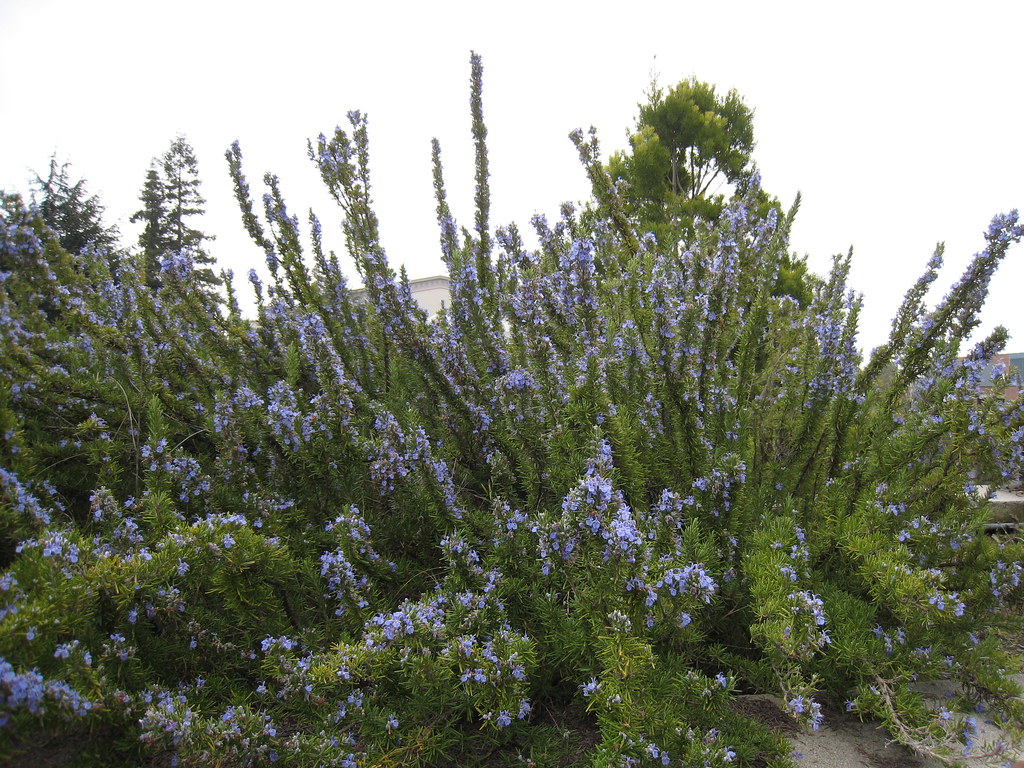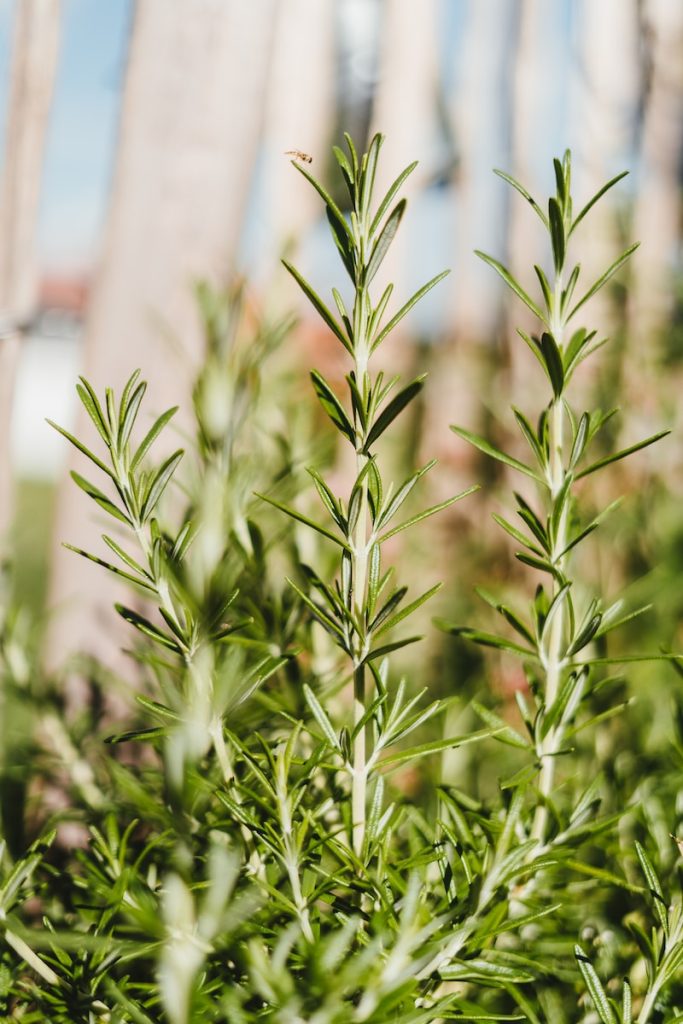Tuscan Blue Rosemary Vs Rosemary
Are you a fan of fresh herbs and looking to add some flavor to your cooking? In this blog post, we will explore the differences between two popular varieties of rosemary: Tuscan Blue Rosemary and traditional Rosemary. Both of these herbs are beloved for their unique flavors and aromas, but they also have some distinct differences in appearance, growth habits, and best uses in the kitchen. Whether you are an experienced gardener or just looking to spice up your cooking, understanding the characteristics of these two herbs can help you make the best choice for your culinary endeavors. Join us as we delve into the world of Tuscan Blue Rosemary and Rosemary, and discover the best way to use each of these flavorful herbs in your cooking.
What is Tuscan Blue Rosemary?

Tuscan Blue Rosemary is a distinct variety of the popular herb plant, Rosemary. The Tuscan Blue Rosemary, also known as Rosmarinus officinalis, is known for its slender, upright growth, and its vibrant blue flowers. This herb is a member of the Lamiaceae family and is native to the Mediterranean region.
One of the key characteristics of the Tuscan Blue Rosemary is its strong and aromatic leaves. Unlike other varieties of Rosemary, the Tuscan Blue Rosemary has elongated, needle-like leaves that have a strong pine-like scent. The leaves are also a darker green color, making them easy to distinguish from other types of Rosemary.
In terms of growth, the Tuscan Blue Rosemary is a hardy and rugged herb. It thrives in warm, sunny climates and requires well-drained soil to flourish. This variety of Rosemary is also drought-tolerant, making it an ideal choice for xeriscaping and low-water gardens.
When it comes to culinary and medicinal uses, the Tuscan Blue Rosemary has a strong, robust flavor that pairs well with roasted meats, vegetables, and savory bread. Additionally, this variety of Rosemary is known for its aromatic qualities, which make it a popular choice for essential oils and herbal remedies.
What is Rosemary?

Rosemary is a fragrant, evergreen herb with a variety of culinary and medicinal uses. It is native to the Mediterranean region and belongs to the mint family, Lamiaceae. The plant has small, needle-like leaves and produces small, white, purple, or blue flowers. The leaves are often used in cooking, while the woody stems can be used as skewers for grilling.
One of the reasons rosemary is so popular in cooking is due to its distinct, pine-like aroma and earthy flavor. When used in dishes, it adds depth and a unique fragrance, making it a staple herb in many cuisines around the world. In addition to its culinary uses, rosemary is also known for its medicinal properties. It has been used for centuries to alleviate muscle pain, improve memory, and boost the immune system.
When it comes to growing rosemary, it thrives in well-drained, sandy soil and prefers full sun. It is a hardy plant that can withstand drought conditions, making it an ideal choice for herb gardens. The plant can also be grown in containers, making it accessible to those with limited outdoor space. Whether used fresh, dried, or as an essential oil, rosemary is a versatile herb that adds both flavor and health benefits to a variety of dishes.
In conclusion, rosemary is a popular and versatile herb with a long history of use in both culinary and medicinal applications. Its distinctive flavor and aroma, along with its ease of cultivation, make it a valuable addition to any garden or kitchen. Whether you are a seasoned chef or a novice cook, incorporating rosemary into your dishes can elevate the overall flavor and provide potential health benefits.
Differences in appearance and growth
Differences in appearance and growth
The Tuscan Blue Rosemary and Rosemary are two closely related plants that have distinct differences in appearance and growth patterns. When it comes to appearance, the Tuscan Blue Rosemary tends to have a more upright growth habit compared to the prostrate or trailing growth habit of the traditional Rosemary. The leaves of the Tuscan Blue Rosemary are also narrower and a darker shade of green compared to the broader and lighter green leaves of the Rosemary plant.
Additionally, in terms of growth, the Tuscan Blue Rosemary is known for its faster growth rate and larger overall size compared to its traditional counterpart. The Tuscan Blue Rosemary can reach heights of up to 6 feet, while the traditional Rosemary typically grows to a maximum height of 3 feet. The Tuscan Blue Rosemary also has a more vigorous and robust growth habit, making it a popular choice for landscaping and creating hedges.
These differences in appearance and growth make each variety of Rosemary unique and suitable for different uses in the garden. Whether you are looking for a compact, trailing herb for a rock garden or a tall, upright shrub for a formal garden setting, understanding the distinctions between Tuscan Blue Rosemary and Rosemary is essential for making the right choice for your specific gardening needs.
Overall, while both varieties belong to the same species, their differences in appearance and growth make them stand out in various garden settings, offering diverse options for gardeners to explore and enjoy.
Distinct flavors and aromas
When it comes to Tuscan Blue Rosemary and Rosemary, they both possess distinct flavors and aromas that make them essential in the culinary world. Tuscan Blue Rosemary is known for its piney, resinous flavor with hints of lemon and eucalyptus, giving it a more complex and intense taste compared to regular Rosemary. On the other hand, Rosemary has a more earthy, woody flavor with a slightly bitter undertone, making it versatile in various dishes.
The aroma of Tuscan Blue Rosemary is also stronger and more fragrant, making it perfect for infusing oils, marinades, and sauces. Its robust aroma can stand out in dishes, adding depth and complexity to the overall flavor profile. In contrast, the aroma of regular Rosemary is milder and more subtle, making it ideal for complementing milder flavors without overpowering them.
Both herbs offer unique sensory experiences, and their distinct flavors and aromas can elevate a wide range of dishes, from roasted meats to savory bread and pastries. Understanding the differences in flavors and aromas of Tuscan Blue Rosemary and Rosemary can help home cooks and chefs alike in choosing the right herb for their culinary creations.
Whether it’s the bold and intense flavor of Tuscan Blue Rosemary or the classic and aromatic taste of Rosemary, these herbs are essential ingredients that play a crucial role in bringing out the best in every dish.
Best uses for Tuscan Blue Rosemary and Rosemary
Tuscan Blue Rosemary and Rosemary are both versatile and flavorful herbs that can be used in a variety of culinary and non-culinary applications. Whether you have access to fresh rosemary or the dried variety, there are plenty of creative ways to incorporate these fragrant herbs into your cooking and daily routine.
One of the best uses for Tuscan Blue Rosemary is to infuse it into olive oil. This not only adds a delicious flavor to the oil, but also imparts the health benefits of rosemary, such as its anti-inflammatory and antioxidant properties. Use the infused oil as a dipping sauce for bread, drizzle it over roasted vegetables, or use it as a base for homemade salad dressings.
Rosemary is also great for seasoning meat dishes. Whether you’re grilling, roasting, or pan-searing, a sprinkle of fresh or dried rosemary can add a bold and earthy flavor to your favorite cuts of meat. For a simple yet delicious preparation, try marinating chicken, lamb, or pork in a mixture of rosemary, garlic, olive oil, and lemon juice before cooking.
Both Tuscan Blue Rosemary and Rosemary can also be used to make fragrant and decorative herb bundles. Simply tie fresh rosemary sprigs together with twine and hang them in your kitchen to enjoy their pleasing aroma. You can also use these herb bundles to impart flavor to soups, stews, and sauces, then remove them before serving.
Frequently Asked Questions
What is Tuscan Blue Rosemary?
Tuscan Blue Rosemary is a type of rosemary that is known for its strong flavor and distinctive blue-green leaves.
What is Rosemary?
Rosemary is a woody, perennial herb with fragrant, evergreen, needle-like leaves and white, pink, purple, or blue flowers.
Differences in appearance and growth
Tuscan Blue Rosemary has a more upright and compact growth habit with broader leaves, while traditional Rosemary has a more trailing and spreading growth habit with narrower leaves.
Distinct flavors and aromas
Tuscan Blue Rosemary has a stronger, more pungent flavor and aroma compared to traditional Rosemary, which is more delicate and pine-like.
Best uses for Tuscan Blue Rosemary and Rosemary
Tuscan Blue Rosemary is ideal for grilled meats, roasted vegetables, and tomato-based dishes, while traditional Rosemary is often used in poultry, lamb, fish, and marinades.



